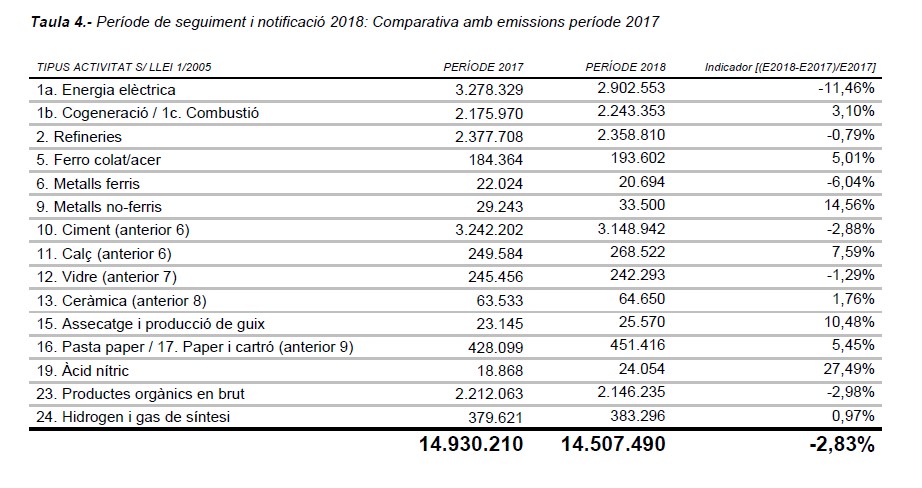The effort and investments of the Catalan cement factories for the protection of the environment have achieved, in 2018, a reduction of 93,000 tons in CO2 emissions. This result confirms the success of the environmental policies of the sector, based on the application of the principles of the Circular Economy, and on the recovery of waste to be valued materially (incorporated into the final product) and energetically (used as an alternative fuel). The decrease in emissions is equivalent to 3% of those of 2017.
The Department of Territory and Sustainability of the Generalitat, through the Catalan Office of Climate Change, has validated the verified reports of the emissions of the facilities included in the Law that regulates the emission rights trading regime (ETS) of the greenhouse gases (GHG). As a whole, the 121 facilities included in the ETS have achieved a reduction of 422,720 tons of CO2 – a 2.83% – compared to the previous year. The reduction was due to the decrease of two sectors, the electric sector and cement. The production of electricity has obtained the greatest decrease, reducing a total of 375,000 tons of CO2, thanks mainly to 2018 which has been very rainy, and this has a direct effect on the production and emissions of the sector. The rest of the sectors have not had large variations and remain in a relatively stable scenario compared to previous years.
In the Press Release issued by the Generalitat, which is accompanied by an extensive report, it is noted that of the total emissions of the industrial sector, 81% are due to combustion, while the other 19% comes from other processes, mainly from the decarbonation of raw materials such as limestone used to make cement. The Generalitat stresses that “the emissions derived from combustion are those that have more capacity to be reduced in the short and medium term, either by improving the efficiency of the processes, or by the gradual introduction of alternative fuels with a zero or less carbon content than fossils”. Both strategies are successfully applied by cement factories in Catalonia, to the point that in 2018 they managed to save 224,276 tons of the total CO2 emission rights allocated by the ETS.

